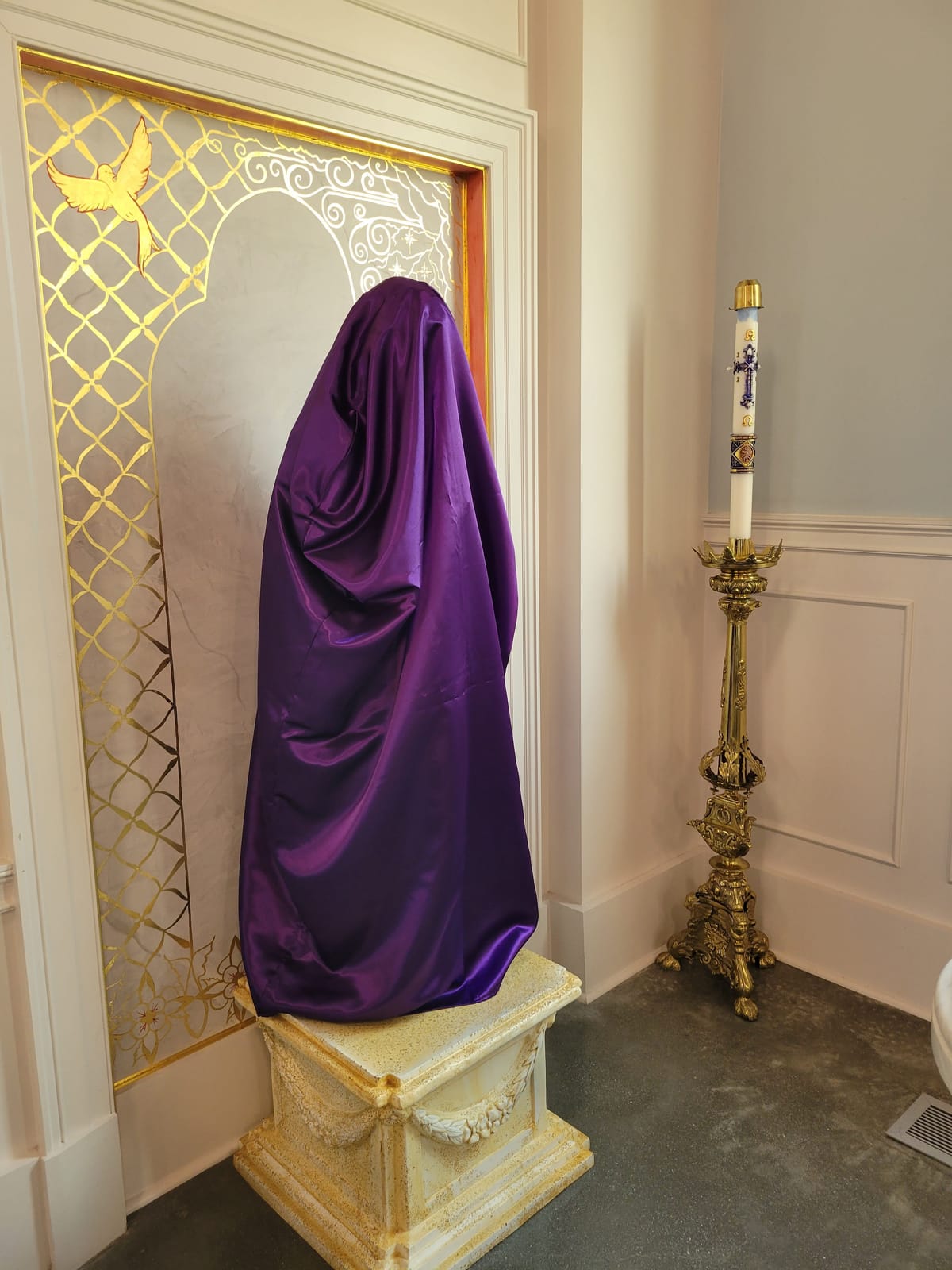109: What is Passiontide?

Chapter
During the two weeks between Passion Sunday and Easter, there are certain practices and rituals that are observed by the Catholic Church. The first week is called "Hebdomas Passionis" by the Latins and "Week of the palms" by the Greeks (starting from the Sunday following). During this time, monks who had chosen a life of solitude in the desert would return to their monasteries.
The rubrical prescriptions of the Roman Missal, Breviary, and "Caeremoniale Episcoporum" for this time include covering crosses, statues, and pictures of Jesus and the saints on the altar and throughout the church with a violet veil, except for the crosses and pictures of the Way of the Cross. The crosses remain covered until after the solemn denudation of the principal crucifix on Good Friday. The statues and pictures remain covered until the Gloria in Excelsis of Holy Saturday, regardless of any feast that may occur.
During this time, Psalm Judica is not said in the Masses de tempore, and the Gloria Patri is omitted at the Asperges, the Introit, and the Lavabo. Only two orations are recited, and the Preface is of the Holy Cross. In the Dominical and ferial offices of the Breviary, the doxology is omitted in the Invitatorium and in the responses, whether long or short.
The reason for covering the crosses is because Christ during this time no longer walked openly among the people but hid himself. The images of the saints are also covered because it would seem improper for them to appear when Jesus himself is hidden.
In some places, crosses were covered on Ash Wednesday or on the first Sunday of Lent. In England, it was customary on the first Monday of Lent to cover up all crucifixes, images of every kind, reliquaries, and even the cup with the Blessed Sacrament. The cloths used were of white linen or silk and marked with a red cross.
"Passion Sunday" by redroofmontreal is licensed under CC BY-NC-SA 2.0.
On Friday of Holy Week, the Church honors the Seven Dolours of Our Lady. On Saturday, the Greeks commemorate the resuscitation of Lazarus.
And that is Passiontide in a nutshell. Thank you for learning with us! And until next time, may god bless you forever.
Sources
APA citation. Mershman, F. (1911). Passiontide. In The Catholic Encyclopedia. New York: Robert Appleton Company. Retrieved March 21, 2023 from New Advent:
http://www.newadvent.org/cathen/11535b.htm
MLA citation. Mershman, Francis. "Passiontide." The Catholic Encyclopedia. Vol. 11. New York: Robert Appleton Company, 1911. 21 Mar. 2023
<http://www.newadvent.org/cathen/11535b.htm>.
Transcription. This article was transcribed for New Advent by Herman F. Holbrook. Per crucem et passionem tuam, libera nos, Domine.
Ecclesiastical approbation. Nihil Obstat. February 1, 1911. Remy Lafort, S.T.D., Censor. Imprimatur. +John Cardinal Farley, Archbishop of New York.




